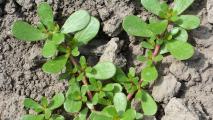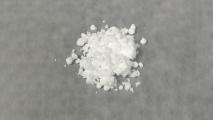The impacts of humanity on the Earth are massive. Arable land is transformed for agriculture; plastics litter the planet; the very atmosphere is warming with carbon emissions and greenhouse gases, hotboxing us.
What if solutions to these complex problems could be found in the very building blocks of life itself?
“A lot of our problems stem from the way we make stuff today,” says Reshma Shetty, the co-founder of Ginkgo Bioworks. “And so, if you think about what biology is fundamentally really good at, it’s good at making stuff.”
Life is good at making stuff — but it’s hard to work with. Living organisms mostly want to make more of themselves, not whatever humans would like them to make.
This is why Ginkgo Bioworks exists: to provide the tools that allow innovators and entrepreneurs to work with biological platforms, to make everything from plastic-munching microbes to better beauty products, using synthetic biology.
Watch our full video with Ginkgo Bioworks:
The difficulties of DNA
Synthetic biology uses DNA to design and make new things. Inside every living thing are cells, Shetty says, and inside those cells are genetic blueprints written in DNA. The DNA instructs cells to make its proteins.
If we can harness that ability, by redrafting DNA, we can get the cells to work for us, making lab-grown meat, new drugs, or crops that need less water.
But while synthetic biology has promising potential, there’s a big catch.
“We don’t really understand, in detail, how cells work,” says Tom Knight, a synthetic biology pioneer and also a co-founder of Ginkgo Bioworks.
We’re getting a lot closer to understanding those all-important details, Knight says. But the challenges of working in synthetic biology are still daunting.
While there’s only four bases in DNA — A, C, G, and T — they are strung together, like a twisted, double pearl necklace, in nearly infinite combinations, to create all the diverse array of nature.
“We’re taking apart these complicated biological systems, and we’re putting them together in different ways that nature isn’t really doing on its own,” Knight says.
Needing to work with this DNA by hand makes for terribly slow going. So Ginkgo Bioworks brought an engineer’s approach to synthetic biology: By incorporating robotics, automation, and machine learning, Ginkgo can accelerate the process of programming cells, allowing researchers to experiment at a scale and speed they could not before.
And with those new tools come new ways for people to innovate.
Speeding up evolution
Boston-based startup Allonnia, launched on Ginkgo Bioworks’ synthetic biology platform, is using synthetic biology to design microbes that can degrade pollutants and contaminants.
“What Allonnia does is, we take what nature’s already doing, and then we use synthetic biology to make that work better and faster and more efficiently,” Allonnia CEO Nicole Richards says.
Allonnia’s mission is to create a waste and pollution-free world, Richards told Chemistry World. While microbes and biology will eventually evolve to process the waste humanity generates, Allonnia looks to direct and speed up that evolution.
They are building custom microbial tools in fields like mining extraction, decontaminating wastewater (like the ponds left behind by oil sand mining), and breaking down the chemicals, coatings, and plastics of industry.
Allonnia maintains a database of microbes and enzymes potentially up to the job, and the capability to engineer customized versions of them. They can then help clients incorporate these synthetic biology solutions into a system integrated with helpful technologies and sensing capabilities.
“Ginkgo is an incredible catalyst for the work that we’re doing,” Richards says.
Synthetic biology for better beauty
Sometimes, synthetic biology and sustainability can sit side by side on your vanity shelf. Cellular programming to create products in the beauty space is growing, industry publication CosmeticsDesign reported.
Swiss company Givaudan — a leading manufacturer of flavor, fragrance, and cosmetic ingredients in the world — will use Ginkgo Bioworks’ platform to help accelerate the development of innovative and sustainable products, Ginkgo announced last summer.
Ginkgo’s tools may allow Givaudan to replace even the rarest and most complex of natural substances with more sustainable versions.
“We are excited to use biology to unlock more wonders of nature in a sustainable way,” said Allison Haitz, biotechnology program director at Givaudan.
Making biology safer
There is, of course, a potential dark side to synthetic biology: If we can more easily engineer biology that is helpful, that also means we can more easily engineer biology that is dangerous.
Working with the government organization IARPA (the Intelligence Advanced Research Projects Activity), Ginkgo Bioworks is developing software that can be used to monitor DNA synthesis.
“Think of this like a malware detector in computer programming — ‘programs’ being written in synthetic DNA will go through the detector software, which will flag any sequences of concern before they are synthesized,” Ginkgo Bioworks co-founder Jason Kelly wrote on their website.
Gingko Bioworks could predict if a genetic sequence can be used for harm using the same technology that could predict if a genetic enzyme could make something beneficial.
The company is also using its synthetic biology expertise to help fight emerging diseases, like helping create rapid response vaccines.
“Ginkgo is the leading developer of genetic engineering tools [and] we have an obligation to ensure that these tools are responsibly used,” Kelly wrote.
A bio future
Difficult challenges require lots of approaches, and Ginkgo Bioworks is determined to make their platforms — and the potential of synthetic biology — available to anyone.
That means not just scrappy startups, big conglomerates, and government organizations, but also colleges, graduate programs, and high school students.
“For the first time, we can sort of see the path there,” co-founder Shetty says, the path to harnessing the powers of biology to create a better world.


